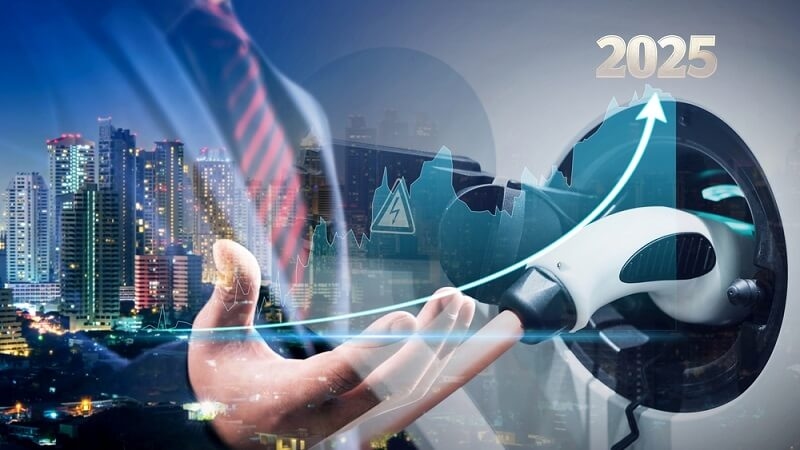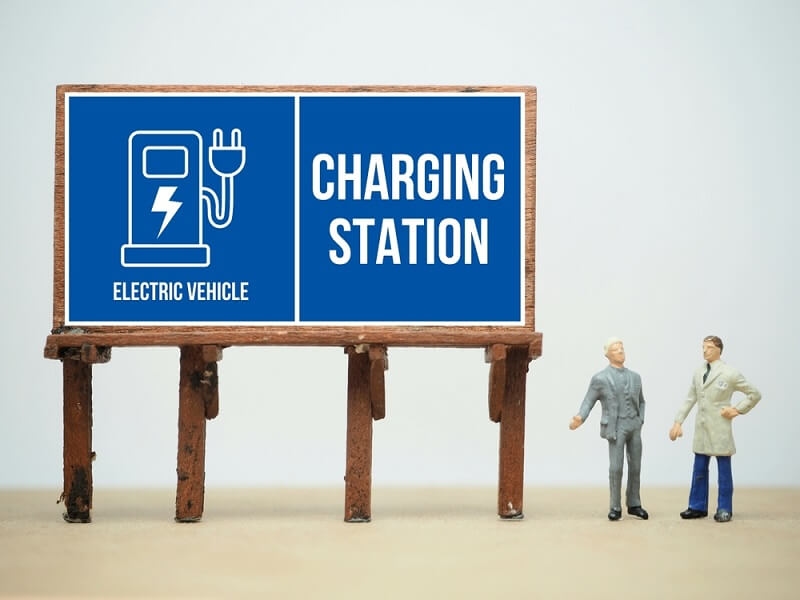
2025 isn’t just another checkpoint in the EV journey—it’s the year that flips the narrative. Electric cars have hovered in that in-between zone: futuristic, promising, but not quite mainstream. That’s over. This year marks the moment electric vehicles stop being an alternative and start becoming the new standard.
Here’s what’s shifting—and why the electric vehicles 2025 landscape won’t look like anything we’ve seen before.
The EV market growth in 2025 is explosive. From new car sales to infrastructure investment, this year is outpacing every earlier forecast.
Global EV sales are set to cross 20 million units by year-end, a massive leap from 2024. And we're not just talking numbers. EVs are penetrating markets that previously had no traction. That’s what makes 2025 different. Electric cars are finally becoming universal—accessible to more people in more places.
EV adoption trends in 2025 aren’t just about increasing numbers—it’s about who is buying. Suburban families, fleet owners, and budget-conscious commuters are all stepping in.
In China, EVs make up nearly half of new car sales. Europe is steady despite reduced incentives. In the U.S., growth is picking up even amid political noise. The future of electric cars no longer belongs to a small group of eco-conscious drivers.
Don’t Miss: Where to Find the Best Car Discounts and Deals
Every year has its bold forecasts, but electric car predictions 2025 feel different. Why? Because a lot of the “future” features are already here—or coming within months.
We’re talking 400+ mile range on mainstream models. Sub-20 minute charging at stations that are actually available. More affordable models dropping under the $30K mark. And platforms like Tesla’s NACS becoming the default in North America, opening up previously restricted charging networks to everyone else.
Automakers aren’t just teasing prototypes anymore. They're producing, scaling, and marketing to the masses. From Hyundai and GM to BYD and Suzuki, everyone is showing up. And the volume isn’t slowing down.

Let’s be honest—charging is still the biggest friction point. Public access is patchy. Some cities are overloaded, others completely overlooked. And home charging isn’t an option for everyone.
But here’s what’s changing in 2025: governments and private players are treating charging infrastructure like real national infrastructure. The U.S. is rolling out NEVI-funded stations at a solid pace. Tesla’s opening up its Superchargers to non-Tesla drivers using the NACS plug. Europe’s ramping up fast-charging corridors. India’s building EV-compatible highways.
There’s still work to do, especially when it comes to affordable and accessible charging, but the urgency has finally caught up to the ambition. And that’s a win.
If 2024 was about experimenting, 2025 is about scaling. Battery tech is making electric vehicles more viable for the average person—both in terms of price and performance.
We’re seeing real progress with lithium iron phosphate (LFP) batteries that last longer and cost less. Silicon-anode batteries are hitting production lines. And solid-state batteries, once a pipe dream, are inching closer to launch windows.
This isn’t just good news for EV nerds—it’s good news for buyers. It means more range, faster charging, and lower prices. All of which drive up EV adoption trends without needing subsidies to do all the heavy lifting.
Incentives are still a major factor. U.S. buyers have until Q3 2025 to benefit from the $7,500 credit. Other regions are adjusting rebate models and targeting private buyers.
Governments are also getting stricter. Automakers can’t drag their feet anymore—they’re being forced to hit emission targets or pay the price.
The EV industry forecast for 2025 is rewriting the power rankings.
BYD is gaining ground on Tesla, and in some markets, it’s already won. GM is pushing hard with its Ultium platform. Hyundai-Kia is dropping sleek models with impressive range. Even Suzuki is stepping in with plans to export India-made EVs to Japan.
Startups like VinFast are making moves in Asia and the U.S. Renault is reviving the family car with a new all-electric twist. Everyone’s got skin in the game now, and the competition is real.
That means innovation can’t slow down. The winners in 2025 won’t just be the ones with the best cars—they’ll be the ones who understand regional needs, price sensitivity, and charging anxiety better than anyone else.
This year, we’re seeing EVs move beyond being just vehicles. They’re becoming power sources, data hubs, and tech platforms.
Vehicle-to-grid capabilities are popping up in real use cases—especially in places with unreliable power supply or aggressive renewable energy targets. Cars aren’t just charging from the grid; they’re stabilizing it.
Telematics, ADAS, and OTA updates are becoming expected, not premium. EVs are acting more like smartphones on wheels than anything else.
And with energy costs fluctuating, dynamic pricing is becoming the norm—charge your car when rates are low, or sell power back when demand spikes. That’s where we’re headed.
Let’s call it what it is: the future of electric cars is no longer a question of “if.” It’s all about how fast and who leads.
2025 is giving us clarity. The market is there. The tech is catching up. The policies are evolving. What’s left is building systems people can trust—charging, support, resale value, insurance.
We’re also seeing long-overdue conversations about sustainability beyond the tailpipe. Battery recycling. Ethical mining. End-of-life use. It’s messy, but it’s necessary.
So no, EVs won’t fix everything. But they’re no longer the side project. They're the main story.
Here’s what’s almost guaranteed by year-end:
And no, this isn’t just wishful thinking. It’s based on actual supply chain data, sales performance, policy deadlines, and consumer sentiment. This is where the momentum is headed.
More to Discover: Top High-Tech Car Trends: AI, EVs & Autonomous Driving
2025 is not just another EV year. It’s the year that proves whether the world’s ready to fully back electric vehicles—without crutches.
Everything’s moving in sync: policy pressure, buyer demand, production ramp-ups, infrastructure expansion. The stars are finally aligning.
And while it won’t be smooth—nothing this big ever is—what matters is that the direction is set. EVs are no longer chasing relevance. They're claiming it.
So if you’re still waiting to see whether electric cars are “worth it,” let’s just say this: by the end of 2025, the question won’t be “Why EVs?”
It’ll be “Why not
This content was created by AI